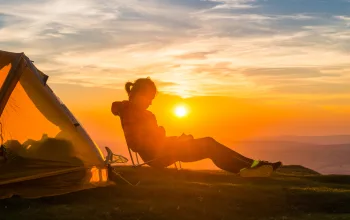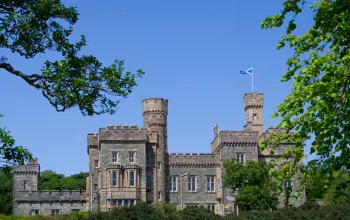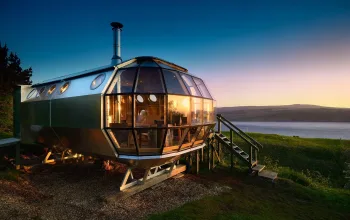1. Swarovski Kristallwelten, Wattens, nr Innsbruck (680.000 visitors)
The path to success for Swarovski has come a long way since its beginnings in 1895 when Daniel Swarovski moved to Wattens, with his newly-invented machine for cutting and polishing crystal jewellery stones. Now a household name, Swarovski is synonymous with jewellery, fashion and ornaments and it is no wonder the Swarovski Crystal Worlds is Tirol’s number 1 tourist attraction. Welcomed by the botanical Giant with water emerging from its mouth, experience the Swarovski Crystal Worlds and the 14 underground Chambers of Wonder. Founded in 1995, the Crystal Worlds provide a memorable insight into the fascination of crystal through creative design, art and exhibitions. The newly designed and renovated Swarovski store, in Innsbruck’s Old Town, is well worth a visit too. It doesn’t just offer the opportunity for visitors to shop, it is an experience in itself, especially the impressive Mirrored Wall in the entrance foyer.
€: Entrance tickets cost €11 adults, under 15 free
W: www.kristallwelten.swarovski.com
2. Alpenzoo, Innsbruck (248,388 visitors)
Affording spectacular views of Innsbruck, the Alpenzoo is the highest zoo in Europe and can be reached by taking the Hungerburgbahn funicular up to the Alpenzoo Station. Last year the Alpenzoo celebrated its 50th anniversary. Home to over 2000 animals and 150 species, the zoo presents a comprehensive overview of the animal world of the Alps. From Alpine mammals still in abundance to endangered species, the Alpenzoo gives a wonderful insight into the biodiversity of the Alps. There is also a unique cold water aquarium, holding nearly all alpine fish species, including some rare local fish types.
€: Entrance tickets cost €9 adults, €4,50 children, under 3 free
W: www.alpenzoo.at/en/
3. Kufstein Fortress (174,000 visitors)
Built in the 13th century under Bavarian rule, Kufstein first became part of Tirol in 1342 and the fortress was the arena of many battles for control over the next 500 years. It was returned to Tirol, for the last time, in 1814. Protectively positioned overlooking Kufstein, the landmark has become one of the most popular tourist attractions of the region. Experience history first-hand and bring it to life with stories and legends from the past. Explore the Kaiserturm tower, which served as a state prison, the 60-metre deep “Deep Well”, the underground rock-cut passage and take time to visit the state-of-the-art local history museum and exhibition.
€: Entrance tickets cost €11 adults, €6,50 children, under 5 free
W: www.festungkufstein.at
4. Bergisel Ski Jump Stadium (140.000 visitors)
Towering above the city of Innsbruck, the Olympic Ski Jump on Bergisel was constructed for the 1964 and 1976 Olympics and more recently was redesigned by esteemed London-based architect Zaha Hadid. This tourist attraction gives an insight into what runs through the mind of ski jumpers before they take their jump. Ironically the view down to Innsbruck from the jumping platform is breath-taking, in more ways than one, as the terrifying view standing before them is of the cemetery below. Regain your composure and relax in the inviting panorama-restaurant “Café im Turm“, with its glass front and unique panoramic views.
€: Entrance tickets cost €9 adults, €4 children, under 6 free
W: www.bergisel.info
5. The Tirol Panorama with Kaiserjägermuseum, Bergisel Innsbruck (136,223 visitors)
Opened in 1880, the original museum of the Tirolean Imperial Infantry (Kaiserjäger) sits on the site of the famous battle in 1809, where local hero Andreas Hofer and Tirolean freedom fighters defeated French and Bavarian troops fighting for Napoleon. The gigantic 1000 sq m Panorama painting, depicting the battle for freedom, was relocated to the new building next door in 2011 and has become the centrepiece of a complex of exhibitions tracing Tirolean social and cultural heritage through the ages. Owing to its location the museum offers fantastic views over Innsbruck and the Nordkette mountain chain.
€ : Adults from €7
W: www.kaiserjaeger.com
6. Hofkirche (Court Church), Innsbruck (124,569 visitors)
Built in Gothic style in 1555, the Hofkirche (Court Church) serves as a memorial to Emperor Maximilian I, one of Austria's most famous Habsburgs, who laid the foundations for his family dynasty to become a major world power. Since Innsbruck was his favourite residence, he was instrumental in elevating its power and prestige and put the city firmly on the map. Taking more than 80 years to complete, the ornate white marble cenotaph is surrounded by 28 larger-than-life bronze statues of Maximilian's ancestors, relatives and heroes. The church also contains the tomb of Andreas Hofer, Tirol's national hero. The Hofkirche is located in Innsbruck’s Old Town and is a few steps away from one of the city’s most recognisable landmarks, the Golden Roof, which was commissioned by Emperor Maximilian I to watch spectacles taking place in the city below.
W: www.tiroler-landesmuseum.at
7. Hofburg (Imperial Residence), Innsbruck (115,977 visitors)
The Hofburg (Imperial Palace) in Innsbruck is one of Austria’s three most important historical buildings, after Schönbrunn Palace and the Hofburg in Vienna. Once a favourite residence of the Habsburgs, the palace was extended further by Empress Maria Theresia to include an ornate ceremonial room, chapel and exhibition room with paintings of her 16 children. Following recent remodelling and renovation, the Hofburg now comprises of five themed museum exhibitions, which illustrate aspects of the political and cultural history of the former imperial residence. The rooms include the Maria Theresia Rooms in original 18th century style, the Empress Elisabeth Apartment replicated in 19th century style, as well as a small Furniture Museum, Ancestral Gallery and Painting Gallery.
€: Entrance tickets cost €8 adults, children under 19 free
W: www.hofburg-innsbruck.at
8. Schloss Ambras (Castle Ambras), Innsbruck (90,956 visitors)
Perched dramatically above Innsbruck, Ambras Castle was originally a fortress of the Counts of Andechs 1000 years ago. It was under the rule of Archduke Ferdinand II from 1564, that the castle was transformed into the palace of today. He commissioned the splendid Spanish Hall, one of the earliest examples of German Renaissance interiors. Visitors can explore the Lower Castle, containing arms and armour, the valuable art collection on the first floor, whilst in the Upper Castle paintings and sculptures can be viewed, as well as the bathroom of Philippine Welser, Ferdinand’s wife, one of the few private bathrooms to have survived from the 16th century.
€: Entrance tickets cost €10 adults, children under 19 free
W: www.schlossambras-innsbruck.at
9. Silberbergwerk (Silver Mine), Schwaz (85,881 visitors)
In the Middle Ages, the town of Schwaz was the mining centre of Europe, providing more than 85% of the world’s silver production. With over 10,000 miners searching for silver and copper, Tirol became one of the richest states in Europe. Discover the mountain from a new angle and delve 800m underground on an adventurous journey into the past and gain a fascinating insight into the heyday of silver mining.
€: Entrance tickets cost €16 adults, €8 children, under 5 free
W: www.silberbergwerk.at/en
10. Stadtturm Innsbruck - City Tower (80,000 visitors)
Built between 1442 and 1450, Innsbruck’s City Tower is one of the city’s most important historical landmarks, after the Golden Roof. Climb the 148 spiral steps to the viewing platform and admire the magnificent 360-degree view of the historic rooftops, spires and surrounding mountains of the city.
€: Entrance tickets cost €3 adults, €1,50 children
W: www.innsbruck.info
For more information on the Tirol region www.visittirol.co.uk or keep updated at www.facebook.com/visittirol





















